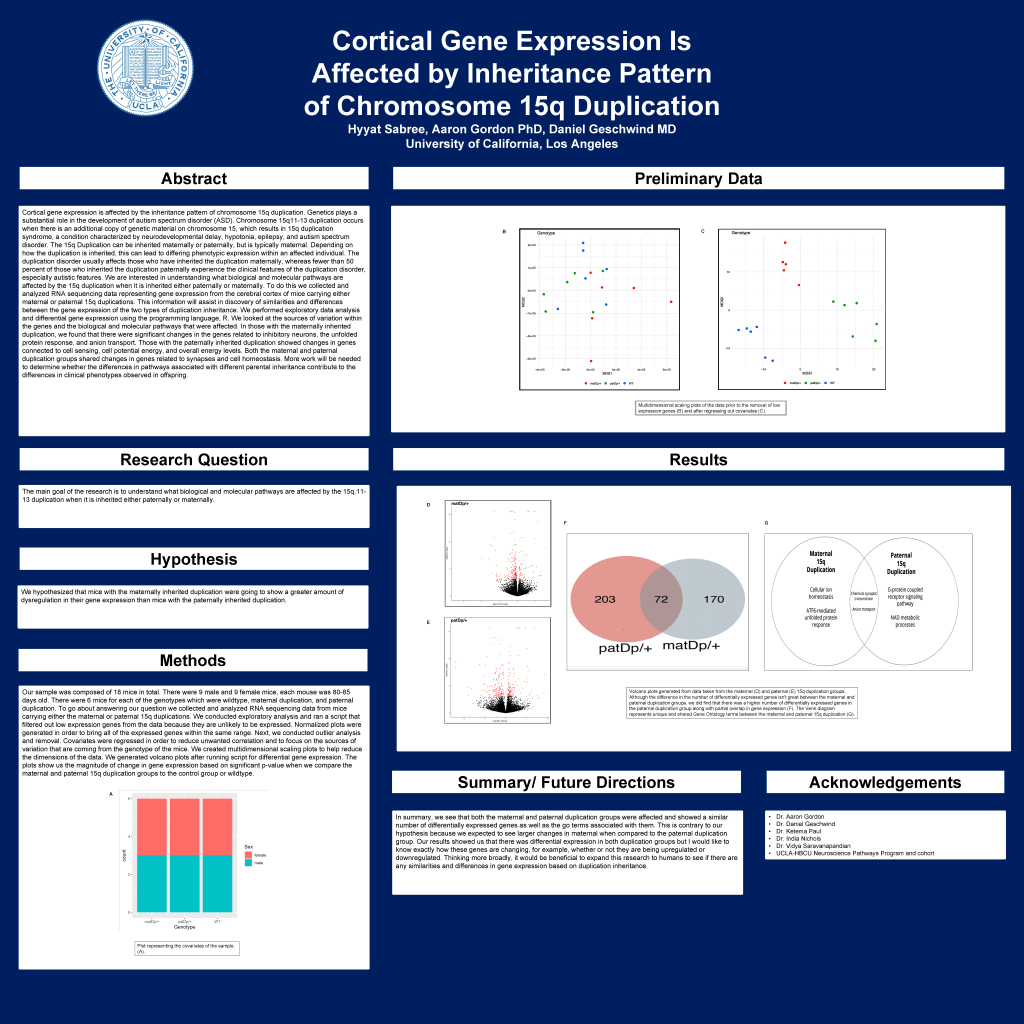
Hyyat Sabree-Marshall
Abstract:
Cortical gene expression is affected by inheritance pattern of chromosome 15q duplication. Genetics plays a substantial role in the development of autism spectrum disorder (ASD). Chromosome 15q11-13 duplication occurs when there is an additional copy of genetic material on chromosome 15, which results in 15q duplication syndrome, a condition characterized by neurodevelopmental delay, hypotonia, epilepsy, and autism spectrum disorder. The 15q Duplication can be inherited maternally or paternally, but is typically maternal. Depending on how the duplication is inherited, this can lead to differing phenotypic expression within an affected individual. The duplication disorder usually affects those who have inherited the duplication maternally, whereas fewer than 50 percent of those who inherited the duplication paternally experience the clinical features of the duplication disorder, especially autistic features. We are interested in understanding what biological and molecular pathways are affected by the 15q duplication when it is inherited either paternally or maternally. To do this we collected and analyzed RNA sequencing data representing gene expression from the cerebral cortex of mice carrying either maternal or paternal 15q duplications. This information will assist in discovery of similarities and differences between the gene expression of the two types of duplication inheritance. We performed exploratory data analysis and differential gene expression using the programming language, R. We looked at the sources of variation within the genes and the biological and molecular pathways that were affected. In those with the maternally inherited duplication, we found that there were significant changes in the genes related to inhibitory neurons, the unfolded protein response, and anion transport. Those with the paternally inherited duplication showed changes in genes connected to cell sensing, cell potential energy, and overall energy levels. Both the maternal and paternal duplication groups shared changes in genes related to synapses and cell homeostasis. More work will be needed to determine whether the differences in pathways associated with different parental inheritance contribute to the differences in clinical phenotypes observed in offspring.

